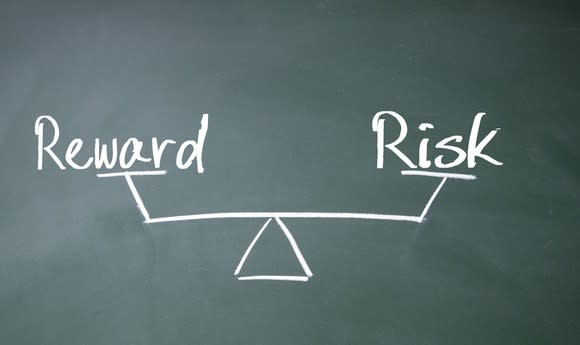Why Playing It Safe With Your Savings Could Hurt You During Retirement
The stock market may be surging, but Americans are still pessimistic about the future, according to a study from United Income. Researchers found that Americans over age 65 in particular are growing more pessimistic about the future of the economy than those under age 35.
Many of those people have a good reason for the negative sentiment. The middle class lost nearly a quarter of its wealth during the Great Recession, and according to a 2016 poll by Marketplace and Edison Research, 71% of Americans think the economy is "rigged in favor of certain groups." Thus it's tempting to play it safe with your savings. When you've been burned by your investments in the recent past and believe the system isn't made to benefit you, you'll likely avoid making any risky investment choices.

Image source: Getty Images
It's true that less risky investments such as CDs or money market accounts experience fewer and smaller ups and downs than stocks, but they also have lower returns. You may be OK with sacrificing some of your returns in exchange for greater peace of mind when the market inevitably takes a downturn, but playing it safe may hurt you in the long run when you don't have enough saved for retirement.
The risk of playing it safe
Most people are not saving enough as it is. In fact, 46% of baby boomers don't have anything at all saved for retirement, according to a study from the Insured Retirement Institute. If you wait until your 50s to start saving, then even high returns won't likely make up for the lost years of saving. Playing it safe by avoiding risk as much as possible will only slow set you back even further.
Just how much can low-risk investments drag down your savings? It may not seem like much at first, but it makes a huge difference over time.
Let's say you're 35 years old and are primarily investing in money market funds with an average return of 3% each year. Compare that to what you could be earning if you had instead invested in stocks at an 8% annual rate of return (a conservative assumption, given the stock market's long-term average return of about 10%). If you're investing $100 per month, here's what your investments would look like over time:
Years | Retirement Savings Balance | |
|---|---|---|
5 | $6,474 | $7,341 |
15 | $22,680 | $33,978 |
30 | $58,014 | $141,761 |
There are also other factors to consider when making low-risk, low-reward investments. For example, if you're earning a 2% annual return on your investments while the inflation rate is humming along at 2.2% each year, then you're actually losing purchasing power.
Then there are fees, another pain point for low-return investments. While you can never escape fees no matter how you choose to invest, if your returns are lower, then fees eat up a bigger chunk of your earnings. For instance, say you've invested $10,000 in an account yielding 3% per year, and you're charged $30 per year in fees. Out of the $300 you earned over the year, you're immediately losing 10% to fees.
What's the right answer?
You may be asking yourself where you should invest your money if stocks are risky and low-risk options don't earn enough.
There's no right answer, per se, but you should balance risk and reward. Don't throw your entire life savings into the riskiest stocks you can find in an attempt to strike it rich, but you also don't need to invest solely in the safest options available.
Money market accounts and CDs are still good investments, but they should not be your only investments. Low-cost index funds and ETFs help create a more diversified portfolio that can limit risk while still earning high enough returns to combat inflation and fees.
You may choose to allocate anywhere from 40% to 60% of your portfolio to stocks, adjusting that number to fit your risk preferences. That way, you have enough "safe" investments to protect you in case of a market downturn, but you're still earning enough to be able to retire comfortably.
The stock market can be a scary place, especially if you've been burned by it in the past. But that doesn't mean you need to avoid stocks altogether and stick with only the lowest-risk investments. By balancing risk and reward, you can still play it safe while making your money work harder for you.
More From The Motley Fool
The Motley Fool has a disclosure policy.

 Yahoo Finance
Yahoo Finance 